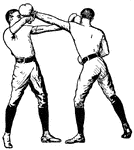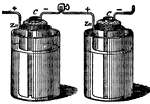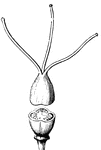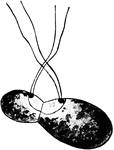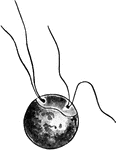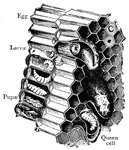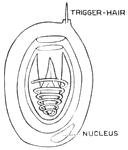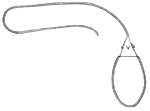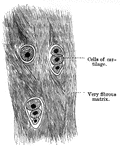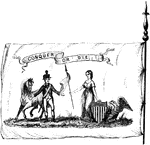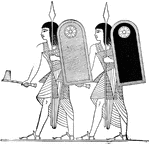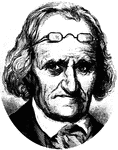
Usual Knapp
(1759--) Soldier for the Revolutionary War. He was afterwards chosen a member of the Commander-in-chiefs…

Gland
Gland(g) from the upper surface of the leaf of lilac: e, epidermis, c, cuticle, p, palisade cells.

Xylem
Ending of a xylem strand among the cells of the mesophyll in a leaf of lilac; t, tracheid; i, intercellular…

Vascular Bundle
Young vascular bundle: p, primary phloem; x, primary xylem; c, first divisions of cambium cells.
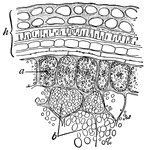
Wheat Grain
Outer portion of a cross-section of a wheat grain; h, various integuments of the ovary and seed, forming…
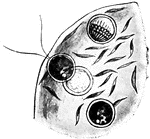
Eudorina
These protozoans form colonies. Formation of the two kinds of reproductive cells of Eudorina.
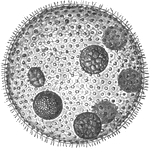
Volvox
These protozoans form colonies. The large spherical colonies of Volvox globator are composed of several…
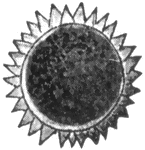
Volvox
These protozoans form colonies. The large spherical colonies of Volvox globator are composed of several…
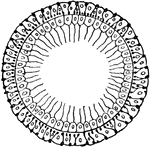
Hydra
Hydra are in the Jellyfish family, class Hydrozoa. Cross-section of the body showing the two layers…
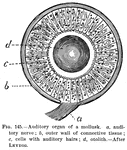
Auditory Organ
auditory organ of a mollusk. a, auditory nerve; b, outer wall of connective tissue; c, cells with auditory…

Portuguese Man-of-War
The Portugures man-of-war has a bladderlike float, and locomotion depends upon the wind and current.…

Officer's Tents
"New Jersey Camp at Arling, Va., designated as Camp Princeton in honor of one of the Revolutionary battle…

Battle of Pea Ridge
"Battle of Pea Ridge, Ark., fought March 6th, 7th and 8th, 1862, between the Federal forces, 13,000…

First Minnesota Regiment
"Fort built around the officer's quarters of the First Minnesota Regiment, Colonel Sully, near Fair…

Crossing of Shenandoah River
"Colonel Pilson's Battery shelling the rear guard of the Confederate General Jackson's Army, at the…

Strasburg Woods
"In the Shenandoah Valley- General Fremont's division marching through the woods to attack the Confederates.…
Hilton Head
"Expedition to Port Royal- Government buildings erected on Hilton Head, S. C., by the Federal forces…
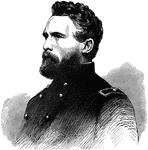
General Hiram G. Berry
"General Berry, born in Thomaston (now Rockland), Me., August 27th, 1824, died at Chancellorsville,…

Army of the Potomac
"Advance of the Army of the Potomac. Occupation of Winchester, VA., and the abandoned Confederate Fortifications,…

Foraging spoils
"Return of a foraging party of the Twenty-fourth Regiment, Connecticut Volunteers, with their spoils,…
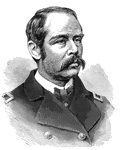
General Francis C. Barlow
"General Barlow, born in Brooklyn, N. Y., October 18th, 1834, was graduated at Harvard in 1855. In 1861…

Distributing
"Distributing rations and appointing a knapsack guard before a reconnoissance near Warrentown, Va. Our…

Federal supply train
"Confederate cavalry attacking a Federal supply train, near Jasper, Tenn. We give a sketch of the capture…
Recrossing the Rappahannock
"The war in Virginia. General Meade recrossing the Rappahannock, October, 1863, before Lee's advance.…
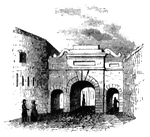
Palace Gate
Palace Gate, outside. This is one of the most beautiful gates of the city, and opens toward the St.…
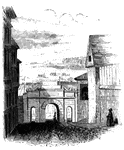
Palace Gate
Palace Gate, inside. This sketch is a view from within Palace Street, looking out upon the open country…

Agnew and Erskine
Head-quarters of Agnew and Erskine. This house is on the south bank of Still River, at the north end…
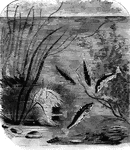
Sticklebacks and Nest
"A few fish, however, form a sort of nest for the protection of their eggs and young; and in some instances,…

Electric Ray
"It is remarkable for an electric battery situated between the pectorals and head and gills; this is…

Walnut Street Prison
"The Walnut Street Prison. This edifice was erected in 1774, and taken down in 1836. The beautiful new…
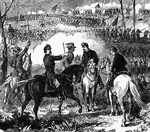
Battle of Pea Ridge
"Battle of Pea Ridge, Ark., fought March 6th, 7th and 8th, 1862, between the Federal forces, 13,000…

Battle of Pea Ridge
"Battle of Pea Ridge, Ark., fought March 6th, 7th and 8th, 1862, between the Federal forces, 13,000…
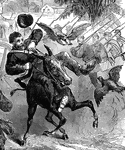
Foraging Spoils - Startled Horse
"Return of a foraging party of the Twenty-fourth Regiment, Connecticut Volunteers, with their spoils,…
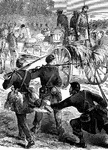
Foraging Spoils near Baton Rouge
"Return of a foraging party of the Twenty-fourth Regiment, Connecticut Volunteers, with their spoils,…
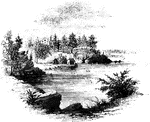
Turtle Bay
"View at Turtle Bay. Turtle Bay is a small rock-bound cove of the East River, at the foot of Forty-seventh…
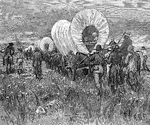
Western Train
"A western emigrant train. The occupation of the west. With every year the line of settlements was pushed…
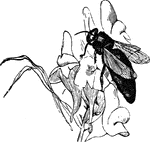
Queen Bee
"The queen bee is larger and longer than the other bees; she moves in a slow and majestic manner, and…

Cells of Honey Bees
"The hexagonal cells for the honey are build upon precisely that mathematical angle which affords the…

Mason Bee
"The Mason Bee, Osmia, of which there are many kinds, makes its cells in spaces from which…

Royal Cells
"Bee is the common name given to a large family of hymenopterous or membranous-winged insects, of which…

Coffee Plant
"Coffee is the seed of an evergreen shrub, which is cultivated in hot climates, and is a native of Abyssinia…
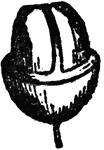
Coffee Bean
"Coffee is the seed of an evergreen shrub, which is cultivated in hot climates, and is a native of Abyssinia…
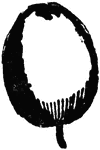
Coffee Bean
"Coffee is the seed of an evergreen shrub, which is cultivated in hot climates, and is a native of Abyssinia…
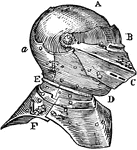
Steel Armet
"Steel Armet, about A.D. 1450. A, calotte or cap; a, neck-guard riveted to A, and having a prolongation…
